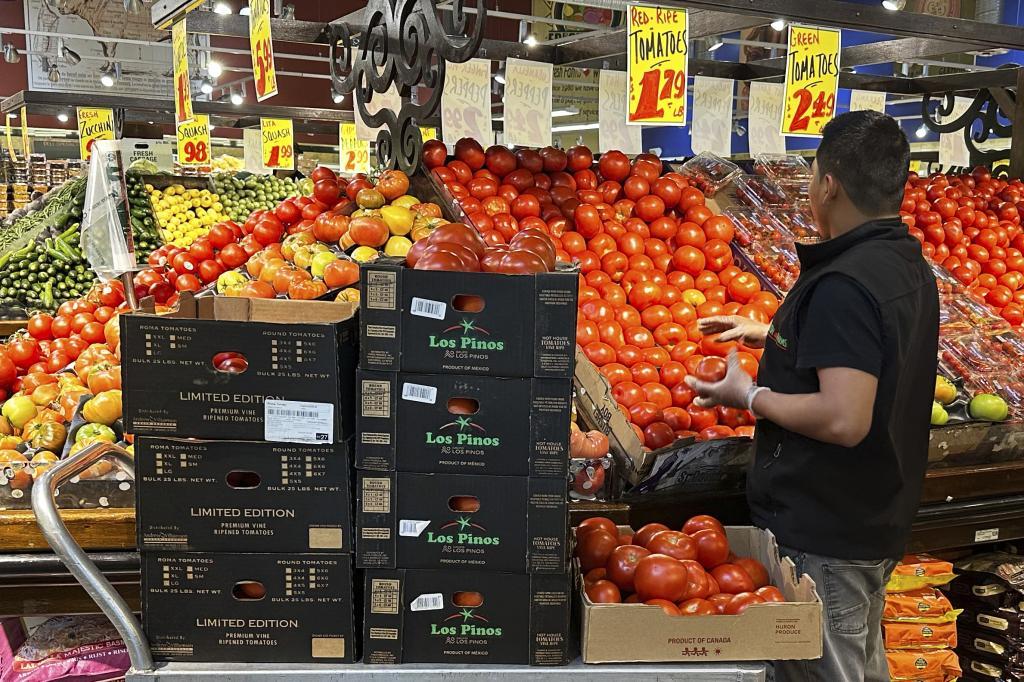It was six in the morning this Thursday, midnight in Washington, when the President of the United States, Donald Trump, posted in capital letters on his social network Thruth celebrating the implementation of the tariffs he has imposed on half the world, including the 15% tariffs applied to European imports. "It's midnight. Billions of dollars in tariffs are flowing to the United States of America," he celebrated, emphatically.
From that moment on, all goods crossing U.S. customs from the Old Continent are subject to a 15% tariff, meaning that the buyer must pay the usual price to the exporter plus that extra percentage destined for the U.S. public coffers.
With that message, Trump cleared up any doubts. Not only for companies but also for the European Commission, which until this week had the question of whether the tariffs agreed upon at the Scotland summit on July 27 would come into effect at midnight on Thursday or today, Friday. The confusion stems from the order published by the White House on the last day of the previous month, stating that the tariffs would come into effect "at 00:01 Eastern Time, seven days after the date of this order." This wording led some to interpret that the D-day was yesterday, while others, like the Commission itself, had thought of the 8th.
Although these levies are already in effect, there are still loose ends to tie up. In fact, the European government asked Washington on Thursday to fulfill the remaining points agreed upon in Scotland "as soon as possible." "The United States has committed to the EU that the general 15% tariff will include exports of pharmaceuticals, automobiles, and semiconductors from the EU, and we expect the United States to fulfill that commitment as soon as possible," said EU Trade spokesperson Olof Gill during the daily press briefing.
The problem is that there is currently no joint document that clearly outlines the trade agreement between the two blocs, leaving room for different interpretations. While Brussels assures that pharmaceuticals, automobiles, and semiconductors are also included and should be subject to a maximum 15% tariff, the U.S. is not so sure. And they hold the upper hand.
President Trump's tendency to make improvised and sometimes contradictory statements also does not help in providing certainty. This Wednesday, he announced that he will impose a 100% tariff on chip and semiconductor imports to force their production in the U.S. He did not clarify if this also included European products.
Meanwhile, the European Commission has the countermeasures package prepared to respond to the U.S. in case an agreement was not reached, which involved imposing tariffs on U.S. imports worth 93 billion euros. For now, these retaliations have been suspended for six months, but the Commission could reactivate them at any time if they believe the U.S. has breached the agreement.
Despite the chaos and uncertainty, which also affects Spanish companies, the direct impact of tariffs on the Spanish productive sector will be limited overall, as exports to the U.S. represent less than 5% of total goods sold abroad.
In aggregate terms, the impact of tariffs on GDP will remain minimal, pending the specifics of the tariffs. Institutions like the Bank of Spain or AIReF had forecasted, before the agreement was known, a reduction of between two and three tenths in GDP growth this year, while Fedea has published an analysis after the July trade pact predicting a blow to GDP growth of 0.74 percentage points, in line with what other European countries will suffer. However, it warns that if this is just the beginning and leads to an international tariff war, then the impact could exceed 3% of GDP.
Although the repercussions will be limited in general, there are sectors for which the blow could be much harder, as around half of their foreign sales are directed to the U.S. This is the case for some subsectors of the agri-food industry, such as the production of olive oil, olives, and wine.
Marisa Poncela, former Secretary of State for Trade and advisor at LLYC, explained to EL MUNDO that although the three are at risk of experiencing a decrease in sales, those with significant international competition will have a tougher time. "There are two sectors, olive oil and olives, that do not have an easy substitute, as the substitution would be for olives from Morocco, Tunisia, Algeria, or Egypt, or European countries facing the same issue as Spain. But in any case, it would not be the same olive, so it is not easily replaceable. It's different for wine, which faces a lot of competition from other sources, like Australia, California's own production, Chile, or other countries that may have more competitive tariffs than the 15% in Europe," she points out.
Automotive is another sector already being affected by tariffs across the continent. In Spain's case, as our factories do not sell finished vehicles to the U.S., there is no expected impact through that channel, but companies selling components to other countries for car manufacturing will suffer. From January to May, Spain has already experienced a 12.2% decline in component sales for automobiles abroad, and the data for June and July could deepen that drop as demand from international manufacturers like Volkswagen decreases -whose first-half results have dropped by 36.6%.
The Government is also closely monitoring the evolution of tariffs on other sectors, but has already called on the autonomous communities to a meeting on September 17 in Valencia to analyze how the new trade scenario affects each of them.
